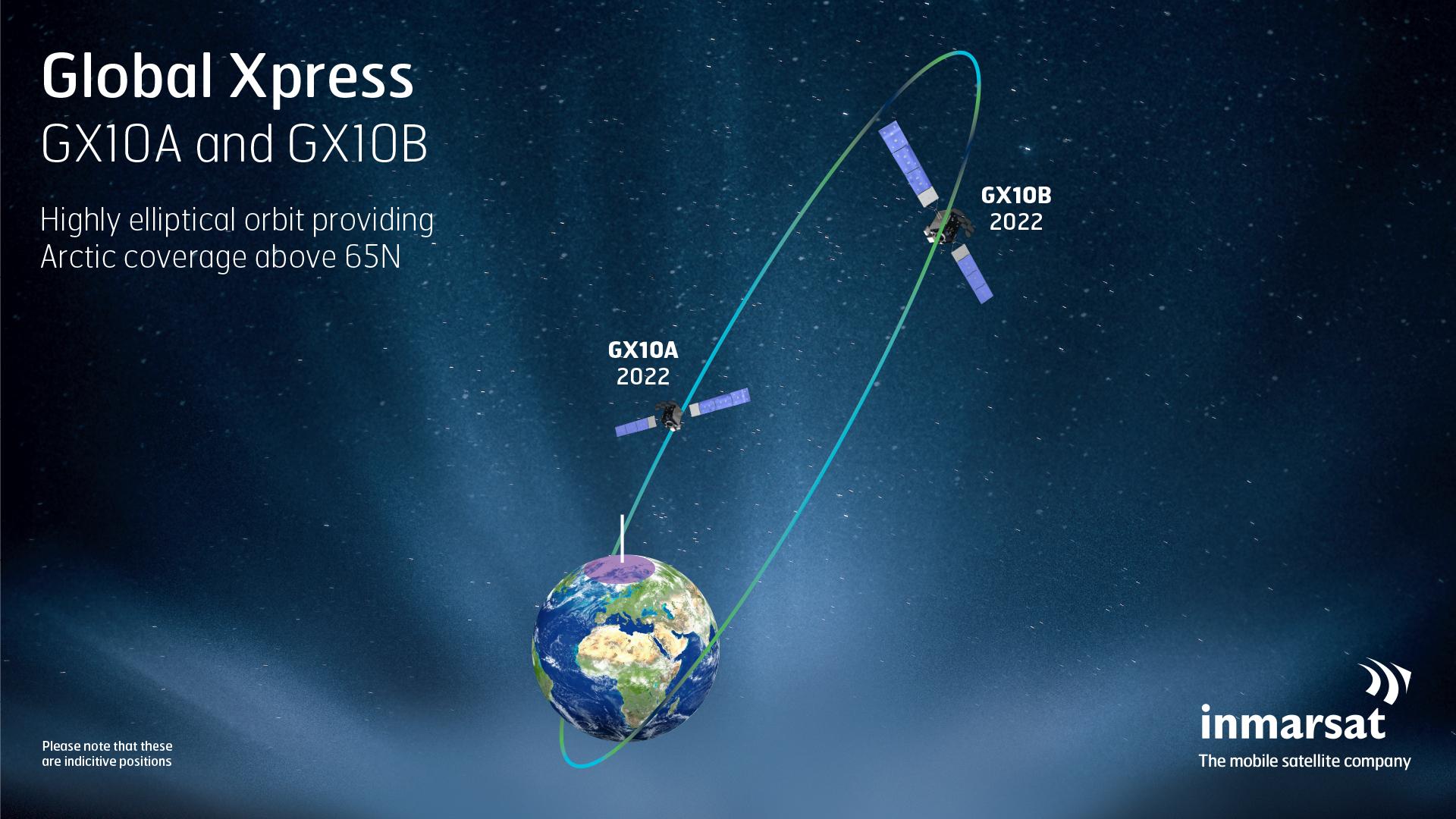
U.S.-based satellite communications provider Viasat on Nov. 8 announced a definitive agreement to acquire UK-based Inmarsat in a transaction valued at $7.3 billion that would create an unrivaled, multiband space and terrestrial network serving aviation, maritime and other markets.
Unveiled as emerging low Earth orbit (LEO) satellite constellations such as Starlink and OneWeb promise ubiquitous, high-speed internet connectivity, the proposed combination of legacy satcom providers would integrate Viasat and Inmarsat L- Ka- and S-band geostationary (GEO) satellites, spectrum and supporting ground infrastructure into a global high-capacity communications network.
“This is the right combination at the right time,” said Rajeev Suri, the former Nokia chief executive who took over as Inmarsat’s CEO in March. “Once combined, we will be well positioned to help address the future of the industry. The satellite communications sector is entering a new era of dynamic new market demands. It is growing fast, remains highly fragmented and is attracting new entrants who see new opportunities. Given these factors, scale and scope are important, and that is exactly what this transaction offers.”
Under the definitive agreement, which has been approved by the boards of both companies, Viasat will pay $850 million in cash, issue $3.1 billion in new shares to Inmarsat’s shareholders and assume $3.4 billion in debt. At closing, Viasat shareholders would own 62.5% and Inmarsat shareholders 37.5% of stock in the combined company.
The transaction is expected to close in the second half of 2022, subject to the approvals of Viasat shareholders and regulatory authorities.
If they were combined this year, Carlsbad, California-based Viasat and London-based Inmarsat would have combined revenue of $4 billion, with $1.4 billion in adjusted earnings before interest, taxes and amortization expenses.
The companies count an in-service fleet of 19 satellites—10 Ka-band (26-40 GHz), eight L-band (1-2 GHz) and one S-band (2-4 GHz)—of which 14 are operated by Inmarsat. They plan to launch eight new GEO satellites in the next three years and two highly elliptical orbit (HEO) satellites that will provide connectivity in the Arctic region—historically a gap in Inmarsat’s aviation coverage.
“This advanced architecture will create a framework incorporating the most favorable characteristics of multi-band, multi-orbit satellites and terrestrial air-to-ground systems that can deliver higher speeds, more bandwidth, greater density of bandwidth at high-demand locations like airport and shipping hubs and lower latency at lower cost than either company could provide alone,” the companies said.
Inmarsat provides broadband Ka-band inflight connectivity for airline and business jet cabins through its Global Xpress satellite network, as well as SwiftBroadband L-band voice and data service for the flight deck and cabin. Its European Aviation Network with Deutsche Telekom integrates S-band satellite and 4G LTE air-to-ground communications.
Viasat’s network of Ka-band satellites supports broadband inflight connectivity for airline and business jet cabins. The company is nearing deployment of a new generation of high-capacity Viasat-3 Ka-band satellites that will expand its network capacity and coverage. The first satellite, Viasat-3A, covering the Americas and portions of the Atlantic and Pacific oceans, is scheduled to launch in the first quarter of 2022.
Global bandwidth demand by air passengers is highly concentrated in places with the most people and the greatest economic activity, said Mark Dankberg, Viasat executive chairman and co-founder. Viasat’s and Inmarsat’s satellites are better positioned to match demand than evenly distributed LEO constellations, he advised during a briefing call with analysts.
“Demand over hub airport cities is around 100 times that of the ocean air routes,” Dankberg said, using FlightAware flight-tracking data for reference. “This shows why the combination of Viasat and Inmarsat is so timely. Inmarsat was formed to serve demand that was primarily over oceans, because there was no other way to reliably connect ships and planes there. The original mission was focused on safety and narrowband (communications). But now there is huge growth in broadband demand on all aircraft, not just those that transit oceans, and it’s driven by the passengers consuming more internet content and more video. As a result, the global air travel satellite bandwidth demand is becoming very concentrated over major hub cities.”
Dankberg added: “That’s where Viasat’s current and future satellites provide enormous benefit to airlines and passengers. Yes, we need ocean coverage for intercontinental flights. But the airlines are really learning that the most difficult challenge to excellent inflight connectivity occurs when their aircraft and everybody else’s converge at these hub airports. Together we’ve got a really compelling solution.”
The companies also see growth opportunities for Internet of Things connectivity “including space augmentation of terrestrial 5G” and communications for unmanned aerial vehicles (UAVs) such as air taxis and delivery drones, Dankberg said.
When the acquisition closes, Viasat plans to expand its board of directors from eight to 10 members, with Inmarsat Chairman Andrew Sukawaty serving as one of the new members. Decisions regarding the management of the combined company will be made as part of the integration process, according to the announcement.
Viasat said it is committed to preserving and growing the combined company’s investment in the UK and supporting the first-ever UK National Space Strategy, which was published in September.





